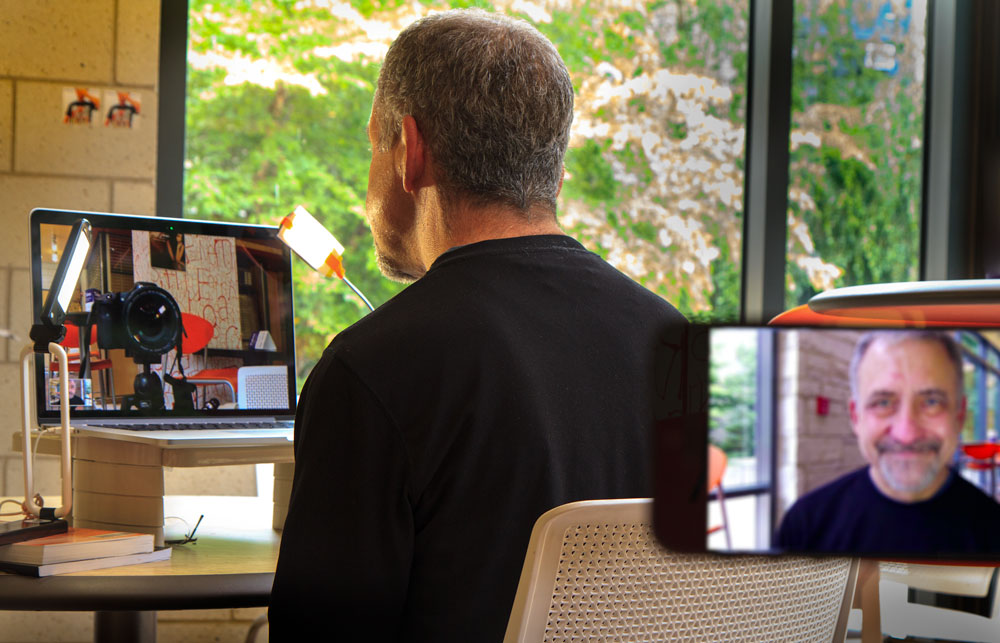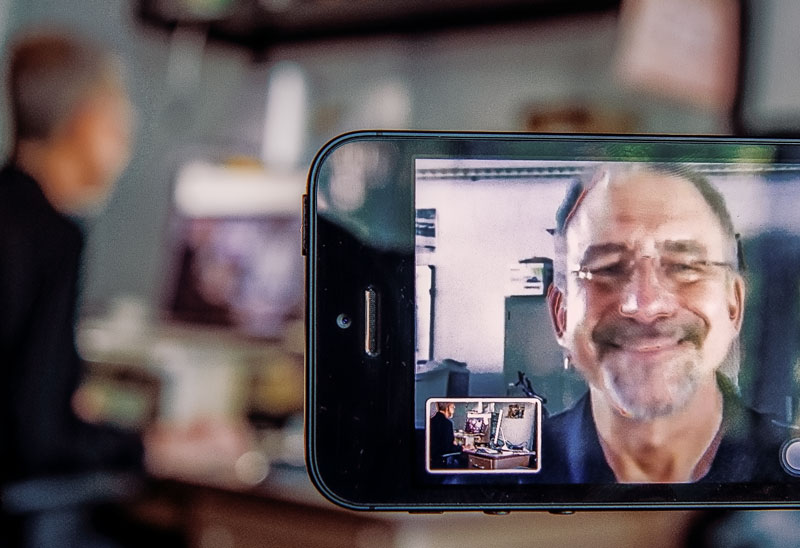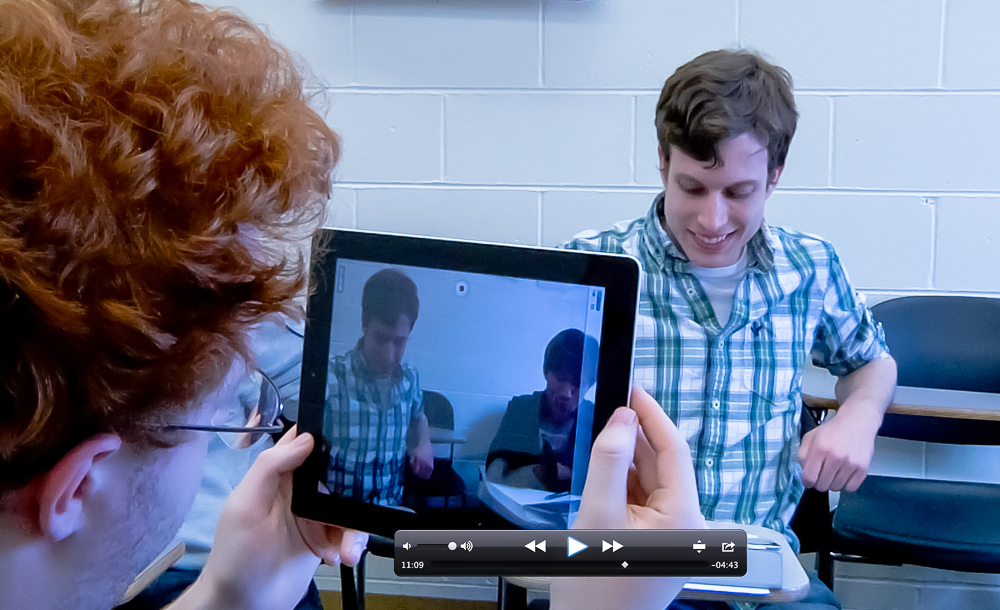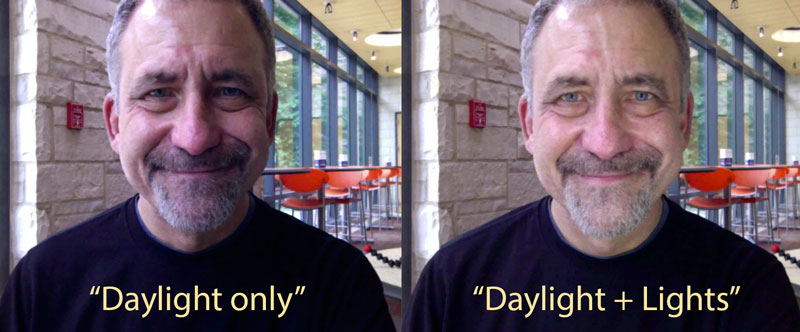Video chat is growing in use by leaps and bounds. Skype, FaceTime, OoVoo, Google Hangouts, Facebook…
When Apple released the FaceTime software for iPhones and iPads it brought video chat to the forefront of long-distance communication. It’s as simple as opening an app and tapping on an email address. And its ease of use is a selling point for Apple.
The MMLC has a video conferencing camera available for checkout, and Northwestern’s upcoming CMS pilot-program for Canvas uses “video remediation” for feedback with students. Video chat – it’s coming. Grading could soon be done with a video recording sent to the student as feedback.
Over the last two years working with the iPad Study I encountered a lot of resistance from faculty to engage in a video chat. “Oh, I look terrible on camera!” and remarks similar to that. And I would tell them, it’s not you that looks terrible. It is the lighting in the room.
The web is full of examples of bad looking video chats (this link will take you to “Let Me Google That For You“, a site which will then seemingly — and humorously — take over your mouse pointer for a moment to search for examples of chat screen shots.)
You’ll find silhouetted outlines of people who thought the window behind them would look good in a chat, or did not realize the lamp across the room was too weak.
Simple, low-cost solutions
Let’s look at simple ways to improve the lighting, improve the camera’s angle, and how to communicate on video.

Using two USB LED lights connected to my laptop makes a big difference in how I look on the other end of the chat…
If you use a laptop, you can get small LED lights that are plenty bright, stay cool to the touch, and are easy to use. For this setup with my laptop, I bought two LED lights from Amazon. They plug into a USB port or into an AC charger for a smartphone. The foldable one is a Samsung book light with four brightness levels and cost 28 dollars, but it has its own battery, and it can even charge another device from its battery. The smaller flexible one has 28 LED lights — it cost a little over 3 dollars! I bought two different ones just to demonstrate, it would have been fine to by two of the three dollar LED lights.
Here is a before/after pic from my Mac’s webcam, with no retouching. The lights are bright, but not annoying. (I also turned down my monitor’s brightness on my laptop to minimize that “zombie blue” color so frequent in video chats.)
You can see I have made some physical changes, too. My laptop’s camera is “eye-level” to minimize the “nostril” effect of a cam on my desk looking up at me. A few hardback books can make a fine stand if you need it.
I chose to wear a dark, non-patterned color. (Black really is slimming!) And there is no distracting pattern or logo. And whatever you do, avoid all white, it makes all kinds of people look less than their best in webcam video.
If you want, you can pay more money for more specialized lighting. Some are made for tablets too. The costs range from twenty dollars to two hundred dollars.
The ViewMe Lights work with a laptop and a desktop, and the quality of the light is good. If you will regularly appear in television interviews via Skype or some other method, it might be worth the $199 investment.
A company called ChatLight has two modestly priced models. Each forms a ring around a computer monitor or tablet, like a makeup room in a theater. They give a very complimentary look, and make deep wrinkles appear less so. They cost twenty dollars for an iPad and twenty-five dollars for a laptop.
But two LED lights for about 7 bucks total from Amazon? Not bad! At least you can see my blue eyes… Though the look of the development area where I work looks less catchy than the Crowe cafe!

Sitting at my desk in the MMLC, it seems obvious that two LED lights, connected to USB ports on my laptop and aimed at my face during a chat, make a world of difference.
Additional Resources:
The Next Web: How to create a great video chat experience.
Chatlights.com (YouTube promotional video)
ViewMe lighting system (a more expensive, more elegant solution).
Inexpensive (under 4 dollars) LED USB lights from Amazon used in this article.
Samsung LED foldable book-light with battery and adjustable arm, $28.


